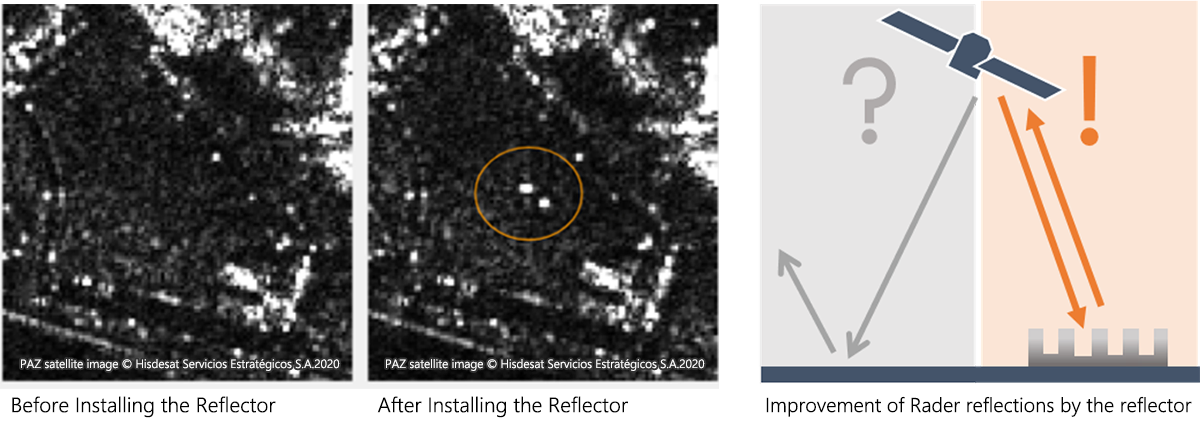Infrastructure Facility Monitoring by SAR Satellites Improvement of Analysis Accuracy on Smooth Surfaces
Release:
Update:
NEW

NEEDS
Enables Observation of Various Infrastructure Facilities
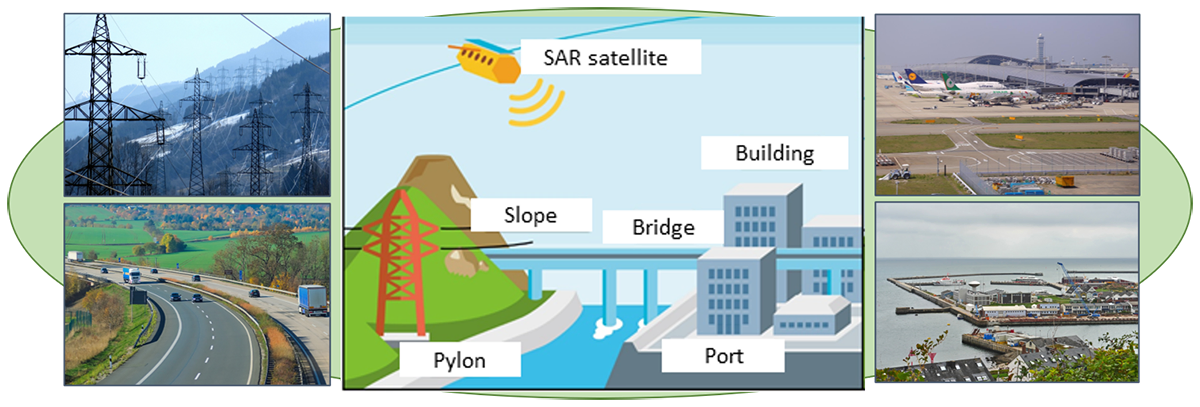
It is estimated that the annual cost of inspecting and maintaining Japan's infrastructure facilities amounts to approximately 625 billion yen* due to the aging of many infrastructure facilities built during the period of rapid economic growth. Maintaining and managing these huge infrastructure facilities manually is a major challenge in terms of safety and cost, and therefore, efficiency improvement through the introduction of technology is required. Under these circumstances, the variability analysis method using SAR satellites can detect minute changes in the observation target, and thus can be used for continuous monitoring of infrastructure facilities. In addition, the observation range of a typical SAR satellite is 50 km, which means that it can observe a large area all at once, leading to greater efficiency and labor savings in the monitoring of large-scale infrastructure facilities.
- *Source: 2020 Edition, Current Status and Future Prospects of the Next-Generation Infrastructure Maintenance Management Technology and System Related Market, Fuji Keizai Co., Ltd.
SOLUTION
Capable of Extracting Minute Variations
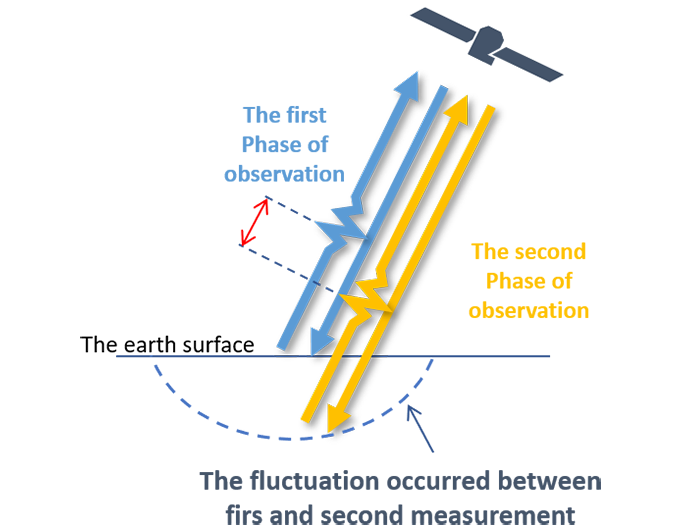
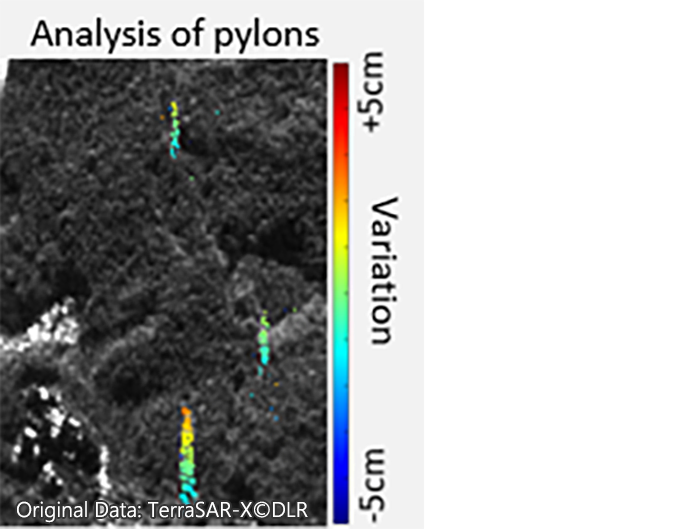
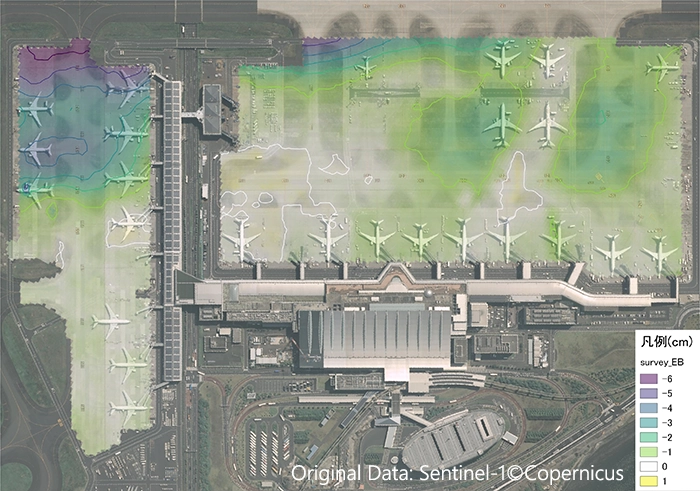
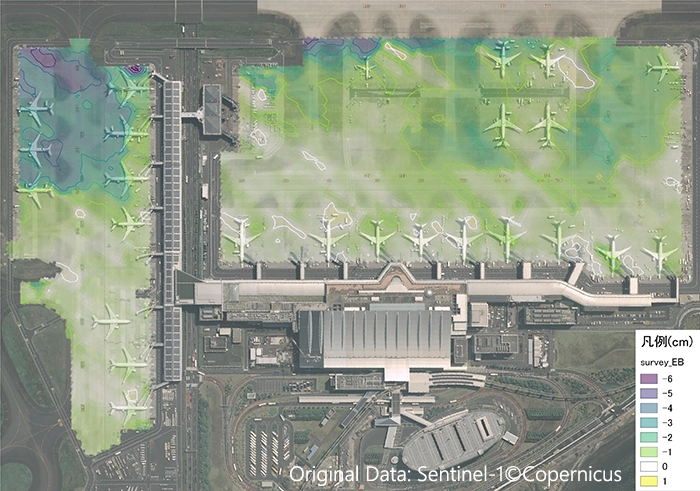
In the analysis of changes in infrastructure facilities using SAR satellites, the reflected waves of microwaves irradiated on the ground surface are acquired, and the amount of ground surface change is calculated based on the phase difference between the data acquired at different times. This analysis method is called interferometric analysis, and by using data accumulated over a long period of time to perform time-series interferometric analysis, it is possible to extract the amount of variation with higher precision. The amount of variation that can be extracted depends on the wavelength of the microwaves, and it is possible to capture variation on the scale of several millimeters to several centimeters. In addition, since microwaves emitted by SAR satellites penetrate clouds, observations can be made under the same conditions even in rainy weather or at night, making it suitable for continuous monitoring.
POINT
Analytic Technology
In interferometric analysis using SAR satellites, there are difficulties in obtaining microwave reflections from flat structures because of the characteristics of microwaves, making analysis using conventional methods difficult for facilities with smooth surfaces such as airports.
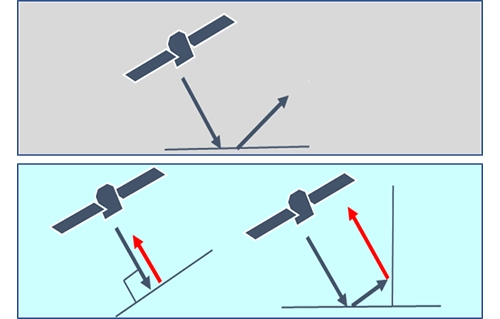
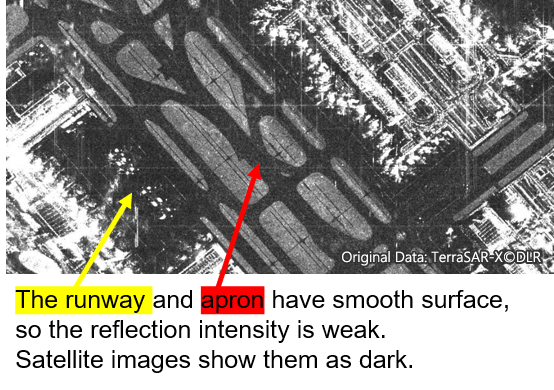
In order to improve the accuracy of analysis on facilities with flat structures, the following two methods have been verified: (1) increasing the data density on smooth surfaces, and (2) improving the accuracy by using reflectors. (1) Increasing the data density of SAR analysis: By establishing a method for accurately extracting fine reflection waves, we improved the observation density of facilities with smooth surfaces.
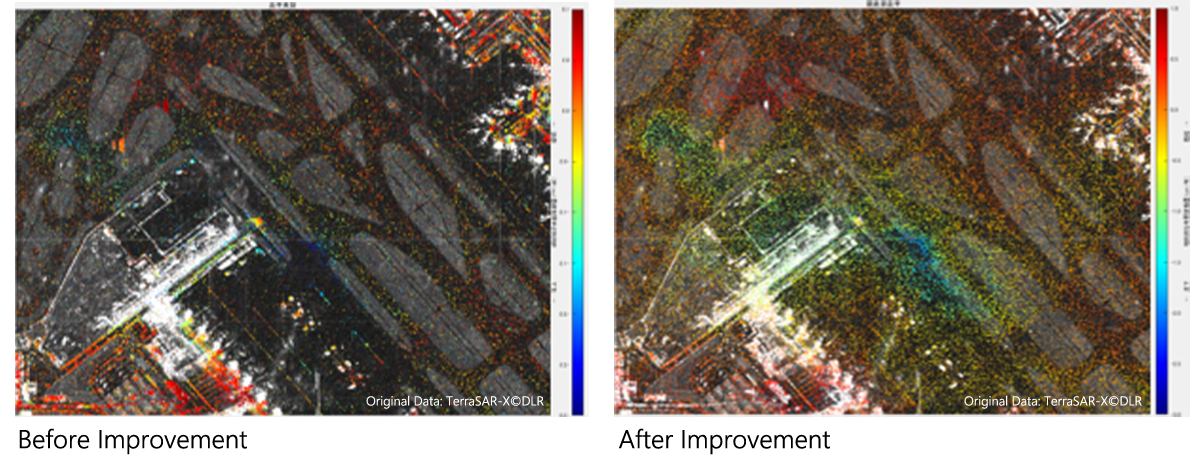
(2) Improvement of accuracy by using a reflector: A simple reflector can stably reflect radar waves from a SAR satellite in the direction of the satellite. Since the accuracy of the reference point given arbitrarily also affects the analysis, the analysis accuracy can be improved by using a known point or a reflector as the analysis reference point where a good reflection can be obtained. The results using the L-shaped and round bar-shaped simple reflectors shown in the figure were verified and it was confirmed that these provide clear reflections. By making improvements such as downsizing the reflector, the system can be applied to various facilities and infrastructures.
